Whether a professional farmer or a backyard gardener, this information will help you protect your cucurbits from fruit fly damage and enjoy a bountiful harvest. So, Let’s dive in. Fruit flies are a widespread insect that may damage cucurbit crops like cucumbers, melons, and squash. These small insects lay their eggs on the surface of the fruit, and when the larvae hatch, they dig into the flesh and feed on it, causing it to soften and become unmarketable.
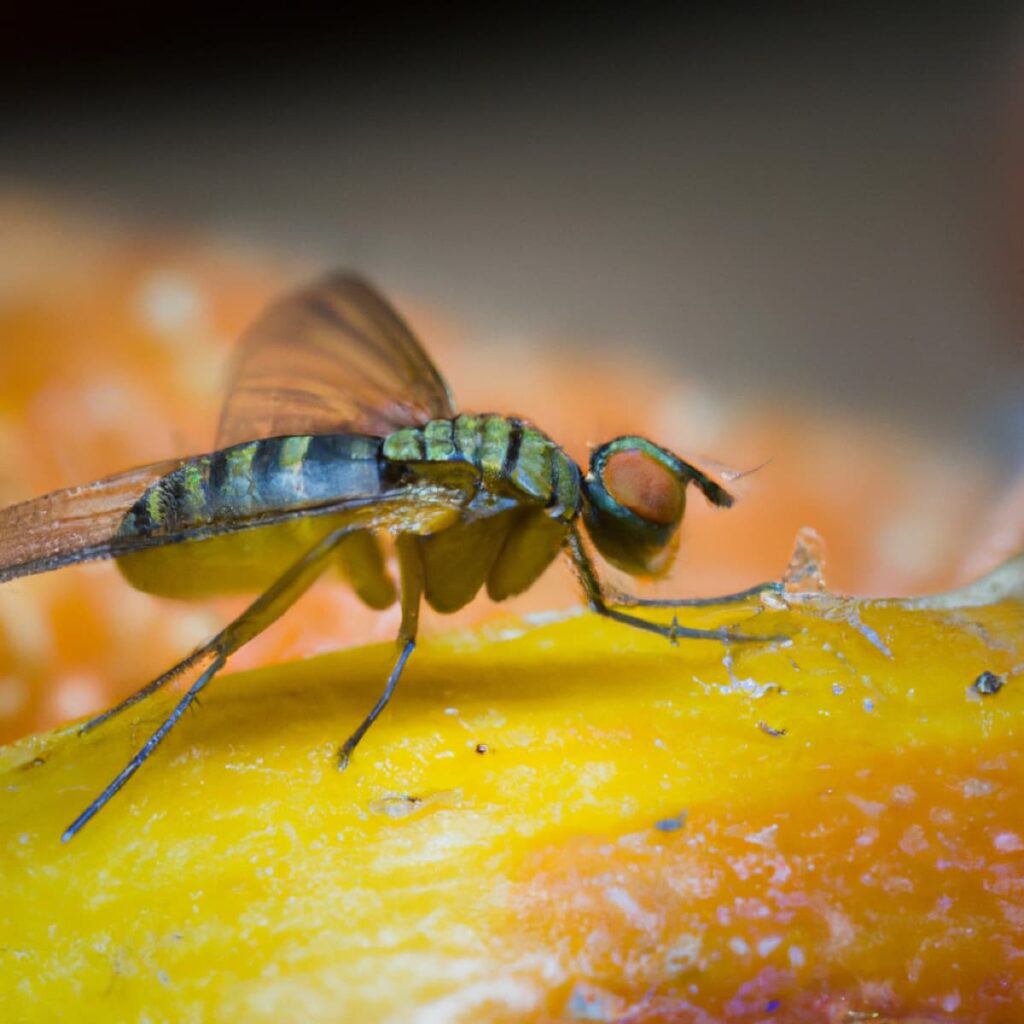
This blog post will discuss the symptoms of a fruit fly infestation, treatment options, and effective management strategies to keep these pesky insects at bay. We’ll also explore the use of chemical and organic controls for fruit fly management in cucurbit crops. Whether you’re a farmer, gardener, or simply someone who enjoys growing their produce, this post is packed with valuable information to help you protect your cucurbit crops from fruit fly damage. So, read on and learn how to keep your cucurbits free from fruit flies!
How to get rid of fruit fly in Cucurbits
What are Cucurbits?
Cucurbits are a plant family, Cucurbitaceae, commonly known as gourds or cucurbits. Cucurbits are plants that include a wide variety of fruits and vegetables. Some of the most common cucurbits include cucumbers, melons, squash, pumpkins, bottle gourd, cucumber, tienda, gherkin, and watermelons.
These plants are known for their large leaves, thick stems, and distinctive fruits that can be eaten fresh or used in cooking. Cucurbits are widely cultivated worldwide and a staple in many diets. They are also popular among home gardeners and farmers due to their ease of growth and high yield potential. The plants are typically annual or perennial and are native to tropical and subtropical Climatic regions of the world.
In case you missed it: Pomegranate Fruit Fly: Symptoms, Treatment, Effective Management, Chemical, and Organic Control
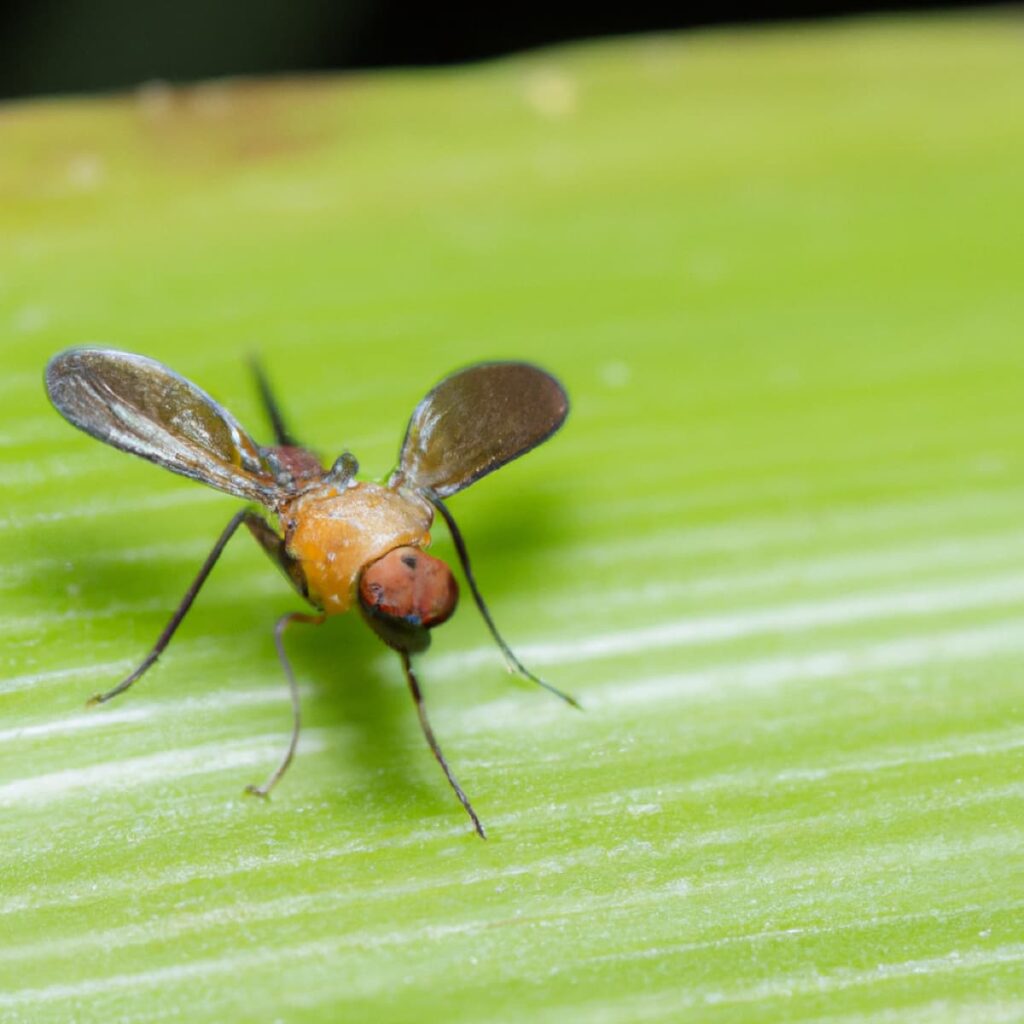
What are the major pests of cucurbits?
- Squash bugs: These bugs suck sap from the plants, causing wilting and yellowing of leaves.
- Cucumber beetles: These beetles can transmit bacterial wilt, a serious disease that can kill cucumber, melon, and squash plants.
- Melon Aphids: These tiny insects feed on the sap of cucurbits, causing stunted growth and deformed leaves. They also produce a sticky residue called honeydew, which can cause the growth of sooty mold.
- Whiteflies: These tiny flying insects feed on the sap of cucurbits, causing yellowing of leaves and reduced growth.
- Cutworms: These are the larvae of moths and can cause damage to the stem of seedling plants.
- Spider mites: These tiny arachnids feed on the sap of cucurbits, causing stippling and yellowing of leaves, and can cause leaf drop.
- Squash vine borer: This is a clear-winged moth that lays its eggs on the stem of the cucurbit plants, and the hatching larvae bore into the stem and tunnel down to the base of the plant, causing wilting and eventual death.
Most common fruit flies in India
In India, the most common fruit fly species that infest cucurbits and other fruits are the Oriental fruit fly (Bactrocera dorsalis) and the Indian fruit fly (Bactrocera cucurbitae). The Oriental fruit fly is a major pest of many fruits and vegetables, including cucurbits, mangoes, guavas, and citrus. It is a small, yellow-brown fly with distinctive black bands on its wings.
The Indian fruit fly, also known as the melon fly, is another common pest of cucurbits and other fruits. It is slightly larger than the Oriental fruit fly, with a yellow-brown body and dark brown wings. Both of these fruit fly species can cause significant damage to fruits and vegetables as they lay their eggs inside the fruits. The larvae then hatch and feed on the fruit’s flesh, causing it to become unmarketable.
What are the different types of fruit flies seen in Cucurbits?
Fruit fly species that infest cucurbits include Bactrocera tau, B. cucurbitae, B. scuteleris, and B. nigrofemurelis. Because they lay their eggs inside the fruits, they are known to cause substantial harm to cucurbit crops. The larvae then hatch and eat the fruit flesh, rendering it unmarketable. The level of loss caused by these fruit flies varies depending on the environment.
When environmental conditions are favorable for the fruit flies, such as high temperatures and high humidity, the population of the fruit flies can increase rapidly, leading to a higher rate of infestation and more significant crop damage. In such cases, the loss can reach up to 100%. However, under less favorable conditions, the population of fruit flies may be lower, and the extent of loss caused by them may be less severe, ranging from 30 to 70%.
How does fruit fly infestation occur in Cucurbits?
The adult flies puncture the early tender fruit tissues and lay their eggs, causing the fruit to drop prematurely. The maggots feed on the contents of the fruits, causing them to rot, become distorted, and fall prematurely. The flies breed throughout the year, laying eggs in tender fruits.
In case you missed it: Growing Tomatoes Organically in Andhra Pradesh: Requirements, Planting to Harvesting Guide for Beginners
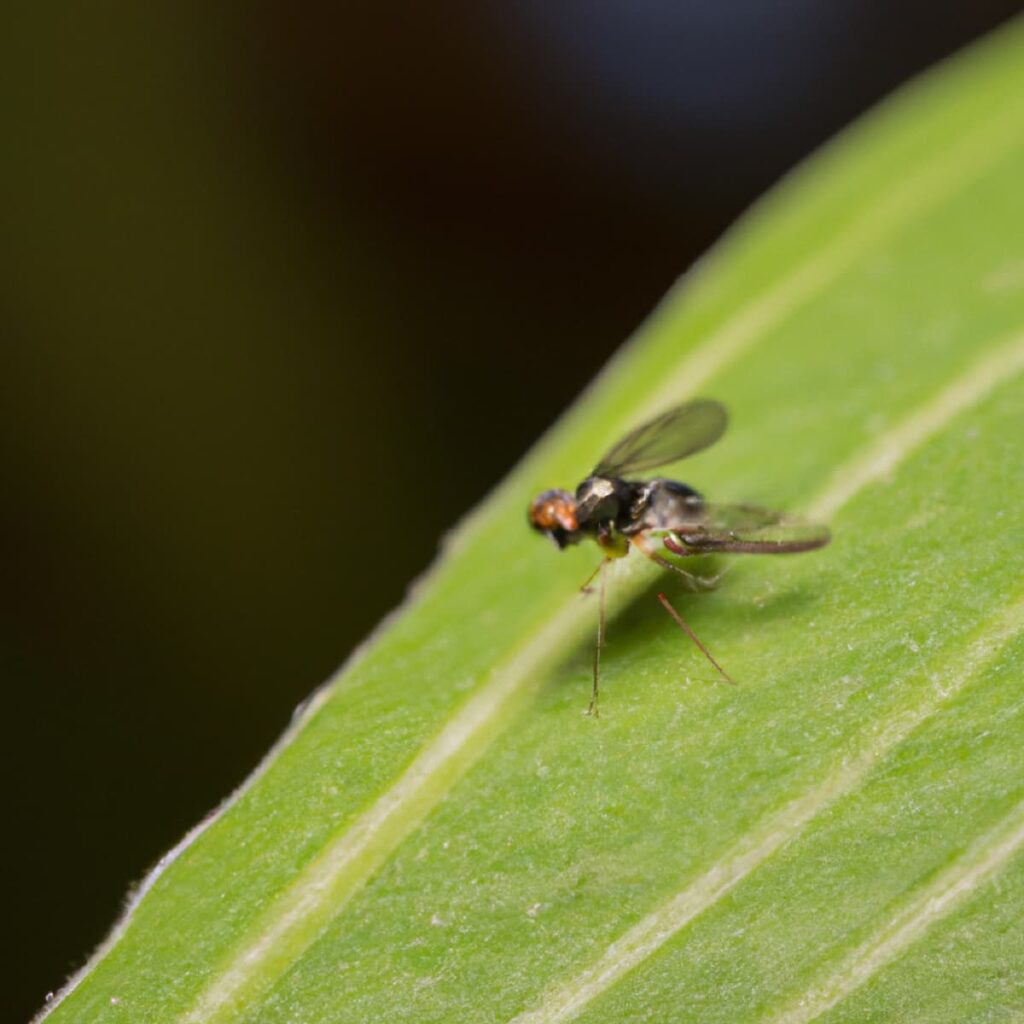
The eggs hatch in 1-9 days and the maggots bore into the fruit, forming galleries. The maggots/Larvae burrow into the soil to pupate, and adult flies emerge in two weeks. Adult flies are reddish-brown and feed on the juices of ripe or injured fruits. The pest population is low in hot, dry conditions and high during the rainy season.
Symptoms of infestation of fruit fly in Cucurbits
The cucurbit fruit fly, Bactrocera cucurbitae, is a major pest of cucurbits causing significant damage to the fruit. Fruit fly infestation in cucurbits causes damage to the fruits, resulting in reduced yield and quality. Symptoms of infestation include small holes on the surface of the fruits, where the maggots have entered, a brown, gummy fluid oozing out of the holes, malformed and distorted fruits, and premature fruit drops. The adult flies lay eggs on young fruits or flowers, which hatch into maggots that feed on the fruit pulp.
This pest remains active throughout the year on different host plants. It is particularly damaging to the fruits of melon, as the maggots are the damaging stage. Symptoms of damage include maggots feeding on the pulp of the fruits, oozing of resinous fluid from fruits, distorted and malformed fruits, premature dropping of fruits and unfit for consumption, split on fruit, gummosis on fruit, brownish internal tissue, stunted fruit.
Identification of the pest can be made by observing the eggs laid singly in clusters on fruits, dirty white apodous maggot as the larva, pupation in soil; adult fruit flies Bactrocera cucurbitae, Bactrocera ciliates, B. zonata which have different characteristics like hyaline wings with brown and grey spots at the apex, ferruginous brown body and yellowish body with a pale yellow band on 3rd tergite.
Proper management tips control for fruit flies in Cucurbits
- Monitoring: Regularly monitoring fruit fly adults and larvae is important to identify infestations early and take appropriate action.
- Cultural control: As mentioned before, cultural control methods such as crop rotation, sanitation, physical barriers, and planting timing can effectively reduce fruit fly populations.
- Biological control: Encouraging natural predators, such as ladybugs, lacewings, and parasitic wasps, can help to control fruit fly populations.
- Chemical control: If necessary, the use of Chemical insecticides can control fruit fly populations, but this should be done in combination with other management techniques for best results.
- Integrated Pest Management (IPM) approach: An IPM approach involves using a combination of management techniques, including cultural, biological, and chemical methods, tailored to the specific needs of the crop and the environment.
- Use of pheromone traps: Pheromone traps can detect fruit fly populations and monitor their activity.
- Harvesting fruits promptly: Harvesting fruits promptly can reduce the risk of fruit fly infestation and the damage caused by fruit flies.
In case you missed it: Growing Coriander Organically in Madhya Pradesh: Cultivation and Production Management
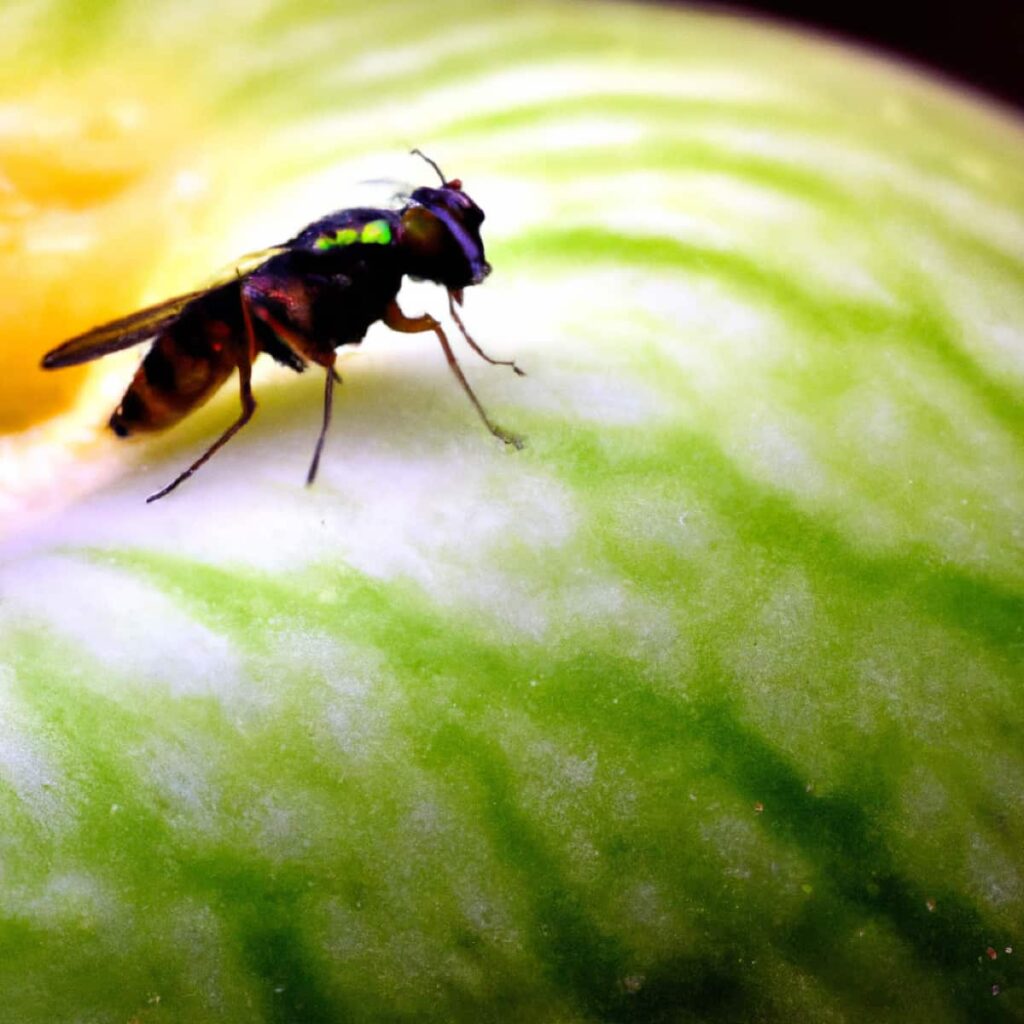
Cultural control or management of fruit fly in Cucurbits
Field sanitation: The most successful strategy for controlling fruit flies in Cucurbits relies on a fundamental component: field cleanliness. Growers must remove all unharvested fruits and vegetables from a field by burying them deep into the soil to stop the reproductive cycle and raise the population. Burying damaged fruits 0.46 m deep in soil lowers adult fly elusion and population growth.
- Rotating crops to reduce the buildup of pests and diseases in the soil
- Using row covers to exclude adult flies from the plants
- Planting traps crops to attract flies away from the main crop
- Harvesting fruit as soon as it is ripe for reducing the number of flies that can breed
- Cleaning up fallen fruit and debris from the previous season to reduce the number of overwintering pests.
- Use of trap crops: Planting a highly attractive crop to fruitflies, such as radishes or nasturtiums, near the cucurbits can lure the fruit flies away from the main crop.
- Crop rotation: Rotating cucurbits with non-host crops can reduce the population of overwintering fruitflies.
- Sanitation: Regularly removing and destroying infested fruits and other debris that could harbor fruitfly larvae can help reduce their population.
- Use of physical barriers: Using row covers, screens, or bags to protect the fruit from fruitfly adults can be effective.
- Timing of planting: Planting cucurbits after the peak fruitfly emergence period can reduce the chances of infestation.
Using yellow sticky traps, which are coated with glue, attract the flies with their yellow color. The flies then get stuck to the trap and are killed. Another method is using pheromone traps, which mimic the scent of female fruit flies and attract male fruit flies. It disrupts mating and reduces the number of fertilized eggs laid, ultimately reducing the population of fruit flies. These methods effectively reduce the number of egg-laying and the number of maggots infesting the fruits, and these should be used in combination with other control methods for the best results.
In case you missed it: How Do You Grow Cucumbers in a Greenhouse: A Step-by-Step Guide for Beginners
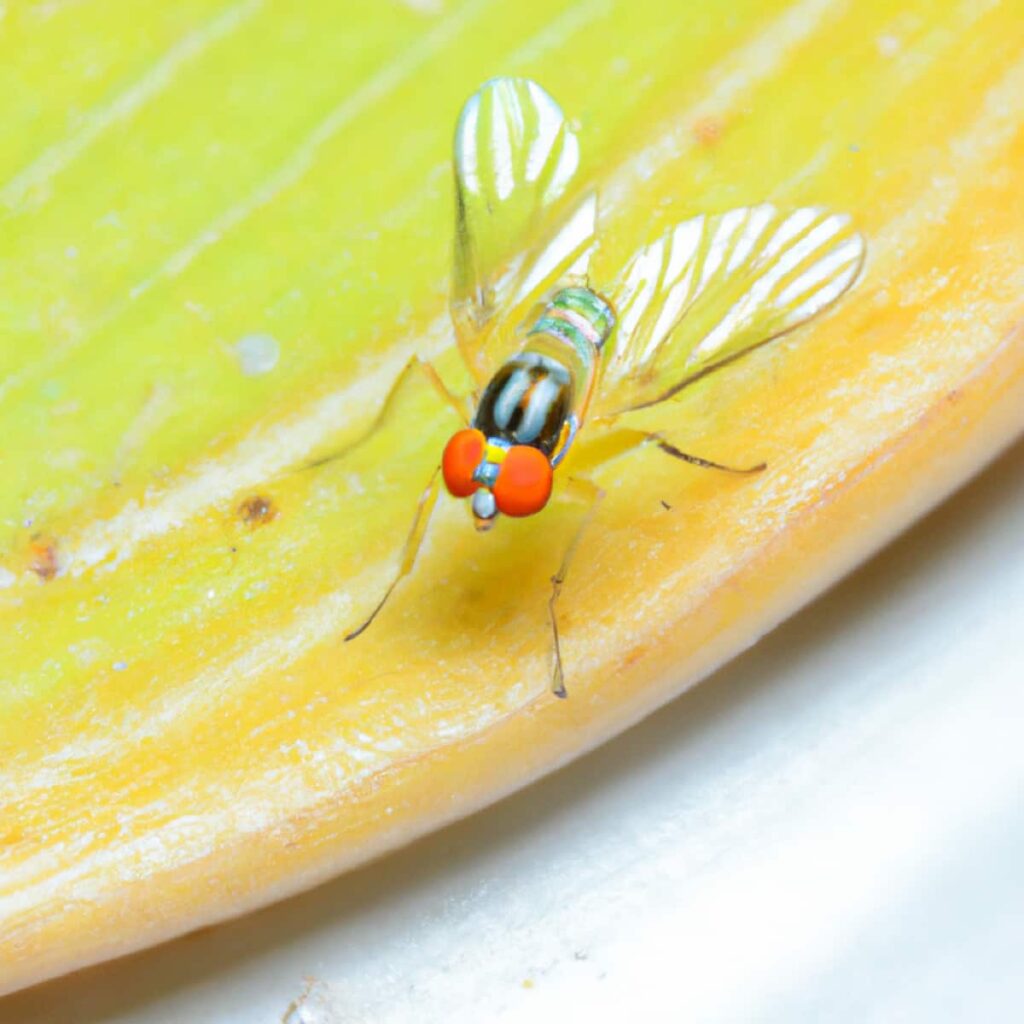
Biological Control or Management of Fruitfly in Cucurbits
Biological control of fruitflies in cucurbits involves using natural predators, parasites, and pathogens to control fruit fly populations. Some examples of biological control methods include:
- Use of parasitic wasps: Parasitic wasps such as Opius concolor and Diachasmimorpha longicaudata are known to parasitize fruitfly larvae and can help to reduce their population.
- Use of predators: Encouraging natural predators such as ladybugs, lacewings, and hoverflies can help to control fruit fly populations.
- Use of pathogens: Certain pathogens, such as Entomopathogenic nematodes (Steinernema spp and Heterorhabditis spp) and fungi (Verticillium lecanii), can infect and kill fruit fly larvae.
- Release of sterilized males: Release of sterilized male fruitflies can disrupt the reproductive cycle of wild fruit flies and reduce the population.
- Use of biopesticides: Biopesticides such as Bacillus thuringiensis can be used to control fruit fly larvae.
Chemical control or management of fruit fly in Cucurbits
Chemical control of fruitflies in cucurbits involves using insecticides to control fruit fly populations. Some examples of chemical control methods include:
- Use of insecticides: Various insecticides are available for controlling fruitflies in cucurbits, including organophosphates, carbamates, pyrethroids, and neonicotinoids. These insecticides can be applied as foliar sprays or as a soil drench.
- Use of insect growth regulators (IGR): IGRs such as pyriproxyfen and hydroprene can disrupt the development of fruit fly larvae, preventing them from reaching adulthood.
- Use of baits: Insecticidal baits can control fruitflies by attracting and killing adult flies. These baits can be used as granules or sprays and contain insecticides such as malathion or spinosad.
- Regularly collecting and destroying damaged fruits.
- Preparing a food bait using crushed pumpkin and malathion solution
- Covering young fruits with newspapers or waste clothes
- Spraying a mixture of malathion and sugar or molasses if more than 10% of fruits are infected
- Not harvesting within seven days of spraying.
- Treating the soil with malathion powder during winter and deep plowing in winter to damage pupae in the soil.
In case you missed it: Hydroponic Farming Cost and Profit in India: Cultivation and Production Management
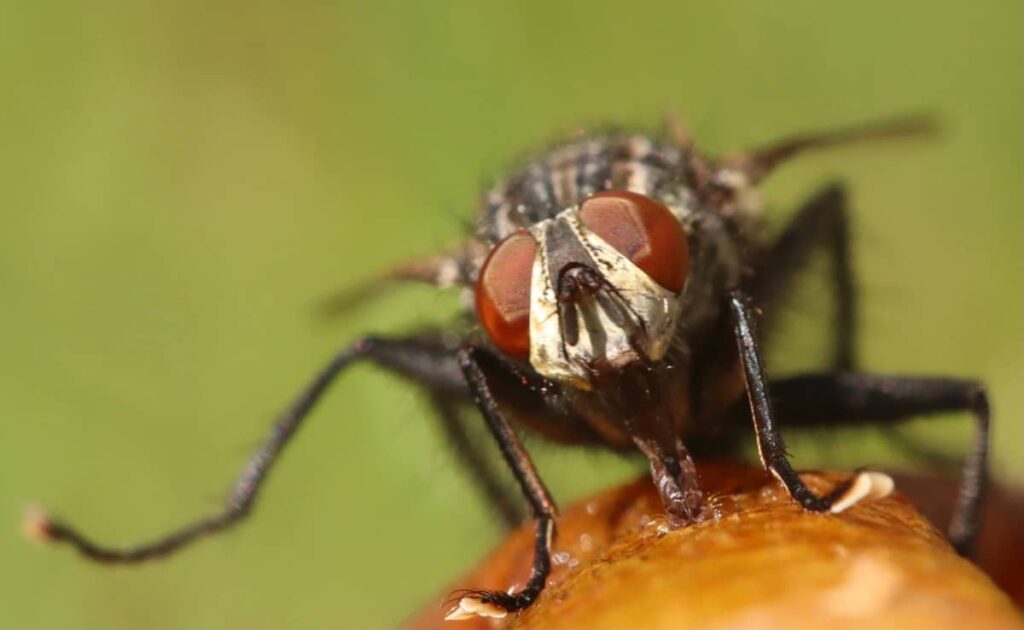
Conclusion
Fruit flies in cucurbits can cause significant damage to crops if left unmanaged. Symptoms of infestation include wilted or discolored leaves and fruit and the presence of small, dark flies. Treatment options include chemical and organic control methods, such as insecticides and traps.
Proper management practices, such as crop rotation and sanitation, can also help to prevent infestations. It is essential to follow all instructions and precautions when using Chemical control methods and to monitor the population regularly to ensure that the treatment is effective. By combining these strategies, growers can effectively manage and control fruit fly populations in cucurbits.
- Profitable Village Farming Business Ideas in 2024
- High-Yield Aquaculture: Fast-Growing Fish for Farming
- Effective Fish Pond Construction Techniques for Beginners
- Irrigation and Water Management in Pineapple Farming
- Blossom to Harvest: Mastering Flowering and Pollination in Papaya Farming
- Pig Fattening Essentials: From Selection to Sale for Beginners
- Raising Wagyu Cattle: A Complete Guide for Premium Beef Production
- Soil Types and Their Water Holding Capacity
- Optimizing Irrigation Schedules for Coconut Groves for Enhanced Yield
- Espresso Your Garden: Coffee Grounds for Healthier Acid-Loving Plants
- The Best Soil Mix for Snake Plants: How to Mix Your Own Snake Plant Soil
- Green Thumb Success: Expert Tips for Cultivating Greenhouse Beans All Year Round
- Bloom All Year Round: The Ultimate Guide to Indoor Hyacinth Care
- Eco-Friendly Gardening: How to Make Liquid Fertilizer from Kitchen Waste
- Ultimate Guide to Grow Anise in Pots: Explore Seed Propagation to Harvesting
- Guide to Raising Chester White Pigs: Discover Breed Facts to Growth Management
- Mastering the Elegance: The Ultimate Guide to Weeping Cherry Tree Care, Planting, and Maintenance
- Ultimate Guide to Planting Garlic in Grow Bags: Growing Strategies for Beginners
- How to Fix Spider Plant Leaf-Related Problems: Natural and Organic Remedies
- 10 Reasons Why Your Tulsi Plant is Shedding Leaves: Home Remedies and Solutions
- Optimizing Growth and Yield: The Advantages of Palm Bunch Ash Fertilizer
- Utilizing Neem Oil Extract as a Natural Pesticide for Hydrangea
- From Soil to Harvest: Various Ways in Which Farmers Can Use AI Tools
- Steps to Encourage and Induce Citrus Flowers: A Comprehensive Guide
- How to Fix Snake Plant Leaf-Related Issues: Natural and Organic Remedies
- Transform Your Garden into a Fragrant Oasis with Raat Ki Rani (Night Blooming Jasmine)
- Discover the Ideal Chicken Breeds for Philippine Farms
- How to Create a Poultry Egg Farm Business Plan for Profits
- Grow Lemon Cucumbers Like a Pro: Insider Techniques for Bountiful Yields
- Ultimate Guide to Caring for Your Pink Princess Philodendron: Tips for Thriving Variegation
- Areca Nut Profit Per Acre: Calculating Yield and Cost of Cultivation
- How Kaveri Chicken is Becoming a More Profitable Breed in Indian Backyards
- Transform Your Barn: 9 Steps to Convert a Horse Stall into a Chicken Coop
- Exploring Suffolk Sheep Disadvantages with Limitations and Challenges
- Guide to Solving Potted Lemon Tree Problems: How to Revive Lemon Tree in Containers
- Steps to Encourage Female Pumpkin Flowers: Best Strategies for More Flowers and High Yields
